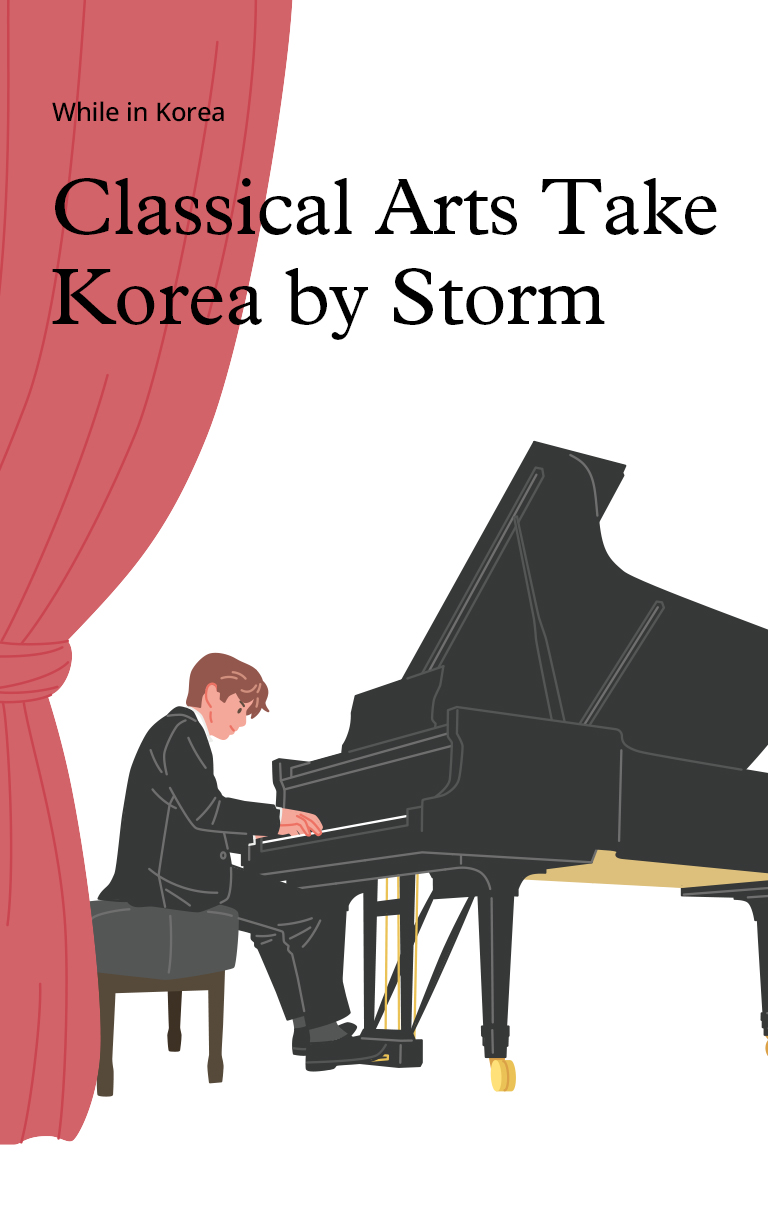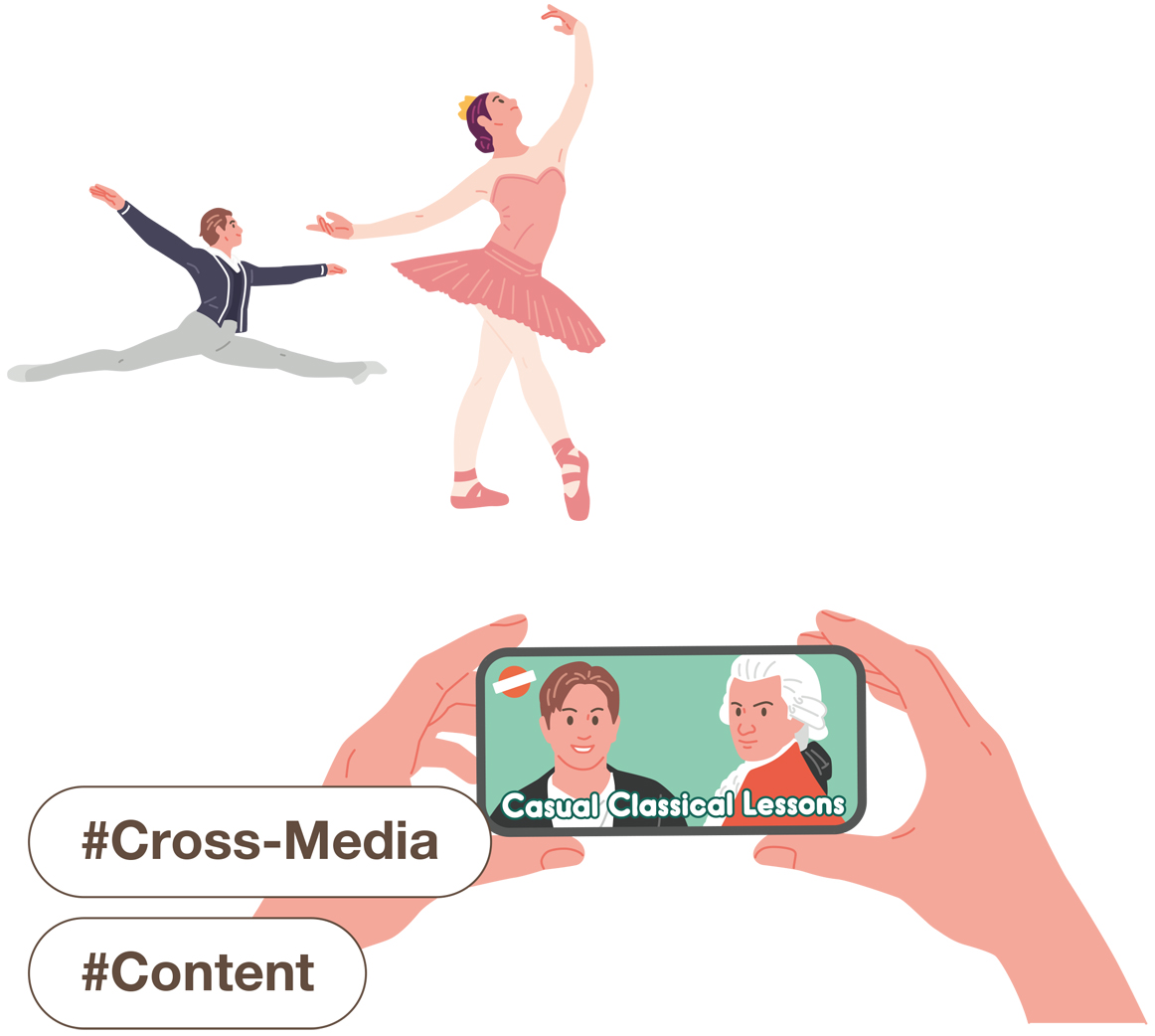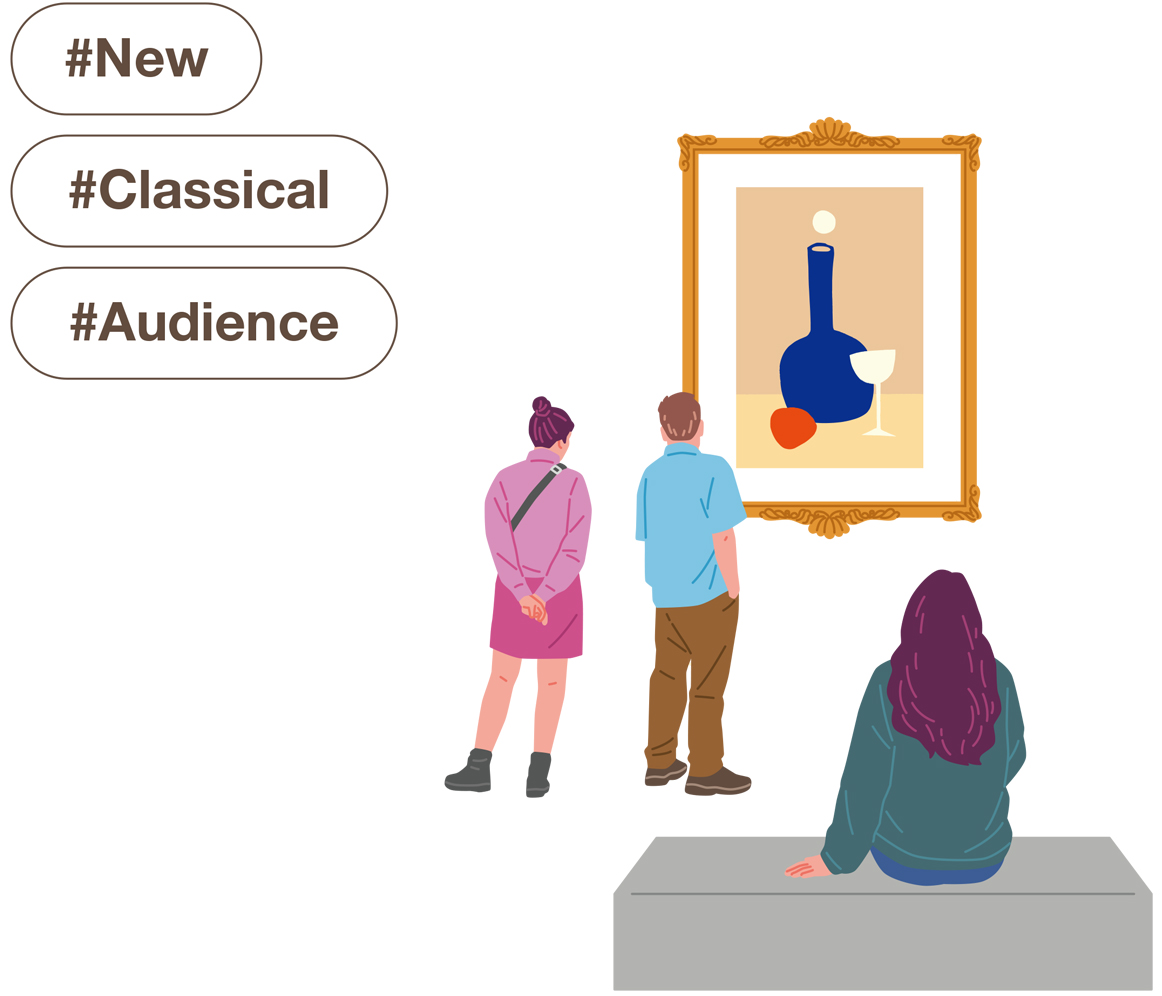
Activities that involve deep reflection or an appreciation of “classical” elements have become trendy in Korea. Alongside “text hip” (engagement with text-based content) and “hip tradition” (appreciation of traditional Korean elements)—notable trends among younger Koreans for several years—“classical Western arts” are now gaining popularity.
Writer. Sung Ji Yeon
Illustrator. RYUGOON
A classical music boom is sweeping across Korea. Young people are eagerly buying tickets to classical concerts, and classical music content is dominating social media feeds.
Classical arts were once considered “difficult” or inaccessible. Classical music concerts, in particular, were hard to approach due to their formal atmosphere, dress codes, required etiquette, high prices and concentration of events in metropolitan areas. However, classical music is now being consumed in the same way as main-stream popular culture. Not only has interest in traditional classical content like concerts and recordings increased, but people are also consuming classical music in various formats across different media platforms.
This trend is most clearly visible in the explosive growth of interest in classical artists. Korean classical stars like Cho Seong-jin and Lim Yunchan have developed fanbases as passionate as those of K-pop stars. Famous artists’ concert tickets sell out immediately upon release, and classical festivals featuring renowned performers are enjoying unprecedented popularity. A concert featuring legendary Korean conductor Chung Myung-whun and pianist Cho Seong-jin sold out in just one minute after opening. The Tongyeong International Music Festival has achieved its highest popularity since its inception.
The production of classical content for main-stream audiences further proves this “classical boom.” YouTube has seen the rise of content that curates classical music around specific themes. Playlists such as “Classical Music to Listen to Before Work Deadlines” and “Metallic Classical,” reflecting current trends in Korea, attract tens of thousands of views. YouTube creators specializing in classical music education and those covering Korean classical music entrance exams are also thriving.
The classical boom isn’t limited to music alone. Museum visits have dramatically increased, and there’s a growing trend toward consuming dance performances and other classical arts. According to the Korea Tourism Organization’s Korea Tourism Data Lab, five out of 10 “hot places” in June 2025 were cultural facilities hosting performances or exhibitions. As the data shows, cultural activities classified as “classical” are gaining significant attention in Korea.

Several factors have contributed to classical music’s rise in popularity. First, Korean classical stars are making their mark on the world stage. Korea has long produced numerous classical music stars. Beyond the previously mentioned Cho Seong-jin and Lim Yunchan, Korean artists have consistently dominated prestigious classical competitions across various fields including piano, violin, cello, voice and conducting. Videos and documentaries featuring these artists on YouTube have served as gateways for people to discover classical music.
Efforts to make classical content more casual have also played a significant role in this trend. For example, performances that arrange OSTs from animations, games, movies and dramas into classical pieces have attracted people who previously knew little about classical music. A Korean broadcaster created a survival program featuring musical artists and opera singers performing vocal-based crossover music. Another broadcaster produced “parody content” through their YouTube channel, combining famous celebrities’ quotes with orchestral music. Various festivals and local governments have also contributed by offering free outdoor performances to expand the audience base. These accessible programs and content have opened the door to classical music appreciation.
Changes in consumer behavior have also contributed to this phenomenon. Today’s trend-leading young generation is sensitive to discovering unique experiences and doesn’t just get excited about “pretty scenes.” It’s no longer just about “Instagrammable” content—meaning visually striking and photogenic enough for Instagram posts. While extracting social media-worthy photos from concert halls and museums was important until a few years ago, this is no longer the case. Focusing on the true essence of content that differs from mainstream popular culture—content that can be fully enjoyed without taking (or being able to take) photos—is now considered “cool.” As a result, while previously “documenting myself at the venue” was important, now reviews and records focusing on “how the performance was” are flooding social media.
People enjoy classical music in their own unique ways. Classical music has transcended performance culture to become various forms of content, coloring every corner of Korea. It’s quite exciting to imagine how classical music will develop in Korea and what its future holds.
